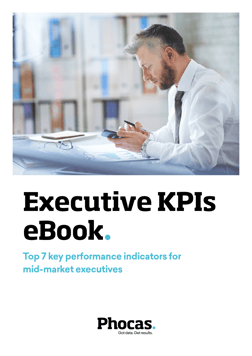Improving customer relations with business intelligence

In recent years, business intelligence (BI) has become central to the operation of many successful businesses across the globe.
Many professionals would be aware of the benefits easy data analysis can have, as they are able to operate more efficiently across departments. However, there seems to be less awareness of the benefits BI can have for a company’s customer relationship strategy. We think it is high time that changes.
Making Figures Add Up
A company needs to have confidence in its figures for its customer relations to be successful. It is not uncommon that companies may get their figures wrong during the reporting process before they transition to BI. This can happen for many reasons, but a usual culprit is manipulations in spreadsheets where one or more formula may be incorrect. As a result, a company may have worked off false assumptions for long periods of time, resulting in seemingly inexplicable low profit.
Not only can good BI solutions like Phocas help avoid these types or errors, but the reporting process becomes far quicker. This results in managers and other employees using factual data to inform their actions, and doing so more often. This way companies can approach their customers offering standard prices, rebates and other arrangements at levels where both parties will benefit. Moreover, by having accurate data on a customer's buying behavior, your reps have a better chance at identifying new sales opportunities your customers will appreciate.
Collaborating With Customers
Using a BI solution like Phocas allows for data sharing between retailers and suppliers. Through the use of user level access control within the software, a business can provide its supplier or customer with data relevant to them, without sharing sensitive information like profit margins or the performance of other suppliers’ products.
On the other side, there is also value to be gained from sharing data with customers. One Phocas client in fact provided each of their top customers with their own Phocas log-in, which gave them access to a sales database. Becasue the right user permissions were in place, customers were able to analyse their own purchases within Phocas, but did not have access to data not relevant to them.
Business insights that can help your customers
As you review your customer data in your sales dashboards you can quickly uncover insights that can be mutually beneficial:
- Could they improve the time products get to branches by drop-shipping?
- Are they always shipping to a central distribution center and then ship to branches?
- Could they combine orders to lower shipping costs?
- Could they order higher quantities in fewer orders to get better pricing?
- Could they centralize ordering to improve efficiencies and reduce redundancies?
- Are there complementary products they could order from you at equal to or lower prices than current suppliers?
- Do they frequently miss promotional opportunities?
When you can help your customers reduce their costs, improve their operations and increase their opportunities for success, it will help to create a stronger customer relationship that can lead to reducing lost sales and increasing cross-sell and up-sell opportunities.
Through data analysis you may find that your customer is buying 20- and 40-watt LED bulbs, but not 60. This could be a major lost sales opportunity. As you drill down into your underlying data you can find opportunities lost by type of customer, type of product, sales region, or individual location, and identify what is preventing your customer from buying more products from you. With the data, you can create special promotions, and help your customers understand why it will benefit them to buy all three products through your company.
Stock Analysis
An essential part of good customer relations is delivering on SLA’s (service level agreements), and not over-promising and under-delivering. Ideally, each order will be delivered on time and in full. Many wholesale distributors and manufacturers however know this is not always the reality. For retailers the same applies; you can run out of stock on a particular item or product line before new stock has arrived.
With Phocas, however, you can easily forecast and plan your stock levels, and avoid under-stock as well as over-stock. With a few simple clicks you can notice overall increases or decreases in sales for any item or product group over any given time period of time. You can also identify and plan for seasonal fluctuations in sales, and even variances by geographical region or sales rep are easy to spot. By planning stock levels well, you ensure you can deliver on your promises, and keep customers happy.
Learn more about which key metrics successful businesses are measuring, and how easy it can be with Phocas. Download your copy of our eBook ‘The top 7 KPIs a CEO or executive should know and measure' by clicking here.

Empowering businesses with intuitive data analytics, driving informed decisions for growth and profitability. We make people feel good about data.
Related blog posts

For many businesses using Oracle NetSuite ERP, financial and operational reporting often starts at a high level - total revenue, cost of goods sold (COGS) and operating expenses. But relying solely on this aggregated view is like trying to drive with a foggy windscreen. Without the ability to drill into specific transactions, blend financial and operational data, and visualize the root causes of performance trends, businesses are flying blind.
Read more
Sales and operational planning (S&OP) helps businesses to align their strategic goals with day-to-day operations. By integrating financial planning with operational and sales planning, S&OP ensures that all departments work cohesively towards common objectives. This process operates on strategic and tactical levels, providing insights that influence long-term decisions while guiding day-to-day actions. Understanding the dual focus of S&OP is essential for creating a robust plan that addresses immediate needs while positioning the company for future success.
Read more
Imagine a soccer team, where each player operates independently, unaware of their teammates' actions and strategies. The forward charges ahead without knowing where the midfielders are, while the defenders are left guessing the goalkeeper's next move. Chaos ensues, and the likelihood of winning plummets. In contrast, a well-coordinated team, communicating effectively, and working towards a common goal, significantly increases its chances of success. This analogy mirrors the concept of Integrated Business Planning (IBP) in a business context. Just as a successful soccer team requires cohesive strategy and communication, a business thrives when its departments are aligned and collaborative.
Read more
Imagine a football coach who never reviews game footage, ignores player and game metrics, including wins and losses, and makes strategic decisions based solely on gut feelings. The likelihood of such a coach leading a team to victory is slim. Similarly, businesses that do not measure sales metrics risk missing out on critical insights that could propel them toward success.
Read moreBrowse by category
 Get a demo
Get a demo Find out how our platform gives you the visibility you need to get more done.
Get your demo today